-
 Bitcoin
Bitcoin $115800
-2.47% -
 Ethereum
Ethereum $3690
1.19% -
 XRP
XRP $3.105
-1.91% -
 Tether USDt
Tether USDt $0.9999
-0.07% -
 BNB
BNB $771.0
0.19% -
 Solana
Solana $179.9
-3.54% -
 USDC
USDC $0.9998
-0.03% -
 Dogecoin
Dogecoin $0.2291
-3.40% -
 TRON
TRON $0.3140
0.81% -
 Cardano
Cardano $0.8007
-1.24% -
 Hyperliquid
Hyperliquid $42.92
-0.44% -
 Stellar
Stellar $0.4212
-2.16% -
 Sui
Sui $3.730
0.03% -
 Chainlink
Chainlink $18.06
0.03% -
 Bitcoin Cash
Bitcoin Cash $546.6
5.08% -
 Hedera
Hedera $0.2438
0.55% -
 Avalanche
Avalanche $23.57
-0.81% -
 Litecoin
Litecoin $114.2
1.04% -
 UNUS SED LEO
UNUS SED LEO $8.970
-0.35% -
 Shiba Inu
Shiba Inu $0.00001363
-0.16% -
 Toncoin
Toncoin $3.136
-0.89% -
 Ethena USDe
Ethena USDe $1.001
-0.04% -
 Uniswap
Uniswap $10.30
1.42% -
 Polkadot
Polkadot $4.013
-0.06% -
 Monero
Monero $324.8
0.87% -
 Dai
Dai $0.9999
-0.04% -
 Bitget Token
Bitget Token $4.509
-1.38% -
 Pepe
Pepe $0.00001226
-2.60% -
 Aave
Aave $291.8
1.34% -
 Cronos
Cronos $0.1294
2.19%
The opportunity to intervene when the weekly positive line breaks through the upper track of the Bollinger band
A weekly close above the upper Bollinger Band signals strong bullish momentum in crypto, often marking the start of a parabolic move—especially when confirmed by high volume and RSI holding above 60.
Jul 24, 2025 at 07:29 am
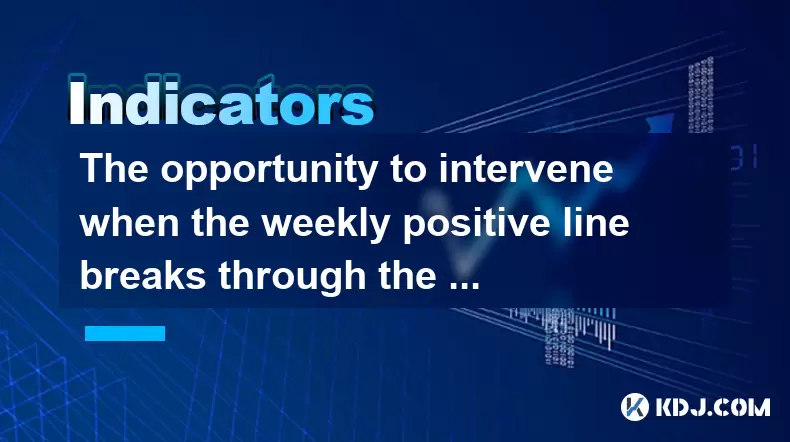
Understanding the Bollinger Bands in Cryptocurrency Trading
Bollinger Bands are a widely used technical analysis tool developed by John Bollinger. They consist of three lines: the middle band, typically a 20-period simple moving average (SMA); the upper band, which is the middle band plus two standard deviations; and the lower band, the middle band minus two standard deviations. These bands dynamically adjust to market volatility, expanding during high volatility and contracting during low volatility. In the context of cryptocurrency trading, where price swings are frequent and intense, Bollinger Bands provide valuable insight into potential reversal or continuation points.
When the price touches or moves beyond the upper band, it often indicates overbought conditions. However, in strong trending markets—common in crypto—prices can remain outside the bands for extended periods. The weekly timeframe adds significance, as it reflects broader market sentiment and long-term momentum. A break above the upper track on the weekly chart is rare and typically signals a powerful bullish move, possibly driven by macroeconomic factors, institutional inflows, or major network upgrades.
What It Means When the Weekly Price Breaks Above the Upper Bollinger Band
A weekly positive line break through the upper Bollinger Band is a notable event. The "positive line" refers to the closing price being higher than the opening price for the week, indicating sustained bullish pressure. When this green candle closes above the upper band, it suggests that the market is in an extreme momentum phase. This is not a common occurrence, as the upper band acts as a resistance level derived from statistical norms.
Such a breakout can reflect a parabolic move, often seen during bull runs in assets like Bitcoin or Ethereum. It may coincide with increased trading volume, social media hype, or breaking news such as regulatory clarity or ETF approvals. Traders interpret this as a signal that the asset is attracting strong demand, but it also raises questions about sustainability. The key is not just the breach itself, but whether the price can close and hold above the band, which may indicate a new phase of price discovery rather than a short-term spike.
Strategic Entry Points After the Breakout
While a breakout above the upper Bollinger Band may seem like a buy signal, entering immediately can be risky. Instead, traders often look for confirmation signals before intervening. One approach is to wait for the next weekly candle to form. If the following week shows strong continuation—another positive close with high volume—it may validate the breakout.
Another method involves using pullback entries. After a sharp move up, prices often retest the upper band, which then acts as dynamic support. To execute this strategy:
- Monitor the weekly chart for a pullback toward the upper Bollinger Band.
- Confirm that volume remains elevated during the retest.
- Look for bullish candlestick patterns, such as a hammer or bullish engulfing, near the band.
- Place a buy order slightly above the retest candle’s high.
- Set a stop-loss below the low of the retest candle or below the middle Bollinger Band to manage risk.
This method reduces the chance of buying at the top and aligns with trend-following principles.
Using Volume and RSI to Confirm the Breakout Strength
Volume analysis is critical when assessing a Bollinger Band breakout. A genuine breakout should be accompanied by a significant increase in trading volume, indicating strong participation. Low-volume breakouts are more likely to fail and result in a swift reversal. To analyze volume:
- Compare the volume of the breakout week to the average volume of the previous 10–20 weeks.
- Use an on-balance volume (OBV) indicator to see if volume is confirming price movement.
- Watch for divergences—rising price with falling volume may signal weakening momentum.
The Relative Strength Index (RSI) is another useful tool. On the weekly chart, an RSI above 70 indicates overbought conditions, which is typical during a Bollinger Band breakout. However, in strong trends, RSI can remain above 70 for weeks. Instead of treating it as a sell signal, traders should look for RSI support levels. If RSI pulls back to 60–65 and bounces, it may confirm underlying strength. A drop below 60 could warn of momentum loss.
Risk Management and Position Sizing for High-Momentum Entries
Entering a trade after a weekly breakout above the Bollinger Band requires strict risk controls. Due to the elevated volatility, position sizing should be conservative. A common rule is to risk no more than 1–2% of trading capital on a single trade. To calculate position size:
- Determine your entry price and stop-loss level.
- Calculate the difference between them (risk per unit).
- Divide your total risk amount (e.g., 1% of account) by the risk per unit.
- The result is the number of units you can buy.
Stop-loss placement is crucial. Placing it just below the breakout candle’s low may be too tight, as weekly candles have large ranges. A better approach is to use the middle Bollinger Band as a dynamic stop. If the price falls below this level in a subsequent week, it could signal a trend reversal. Trailing stops can also be used to lock in profits as the price rises.
Monitoring for Bearish Reversal Signs Post-Breakout
Even in strong uptrends, reversals can occur without warning. Traders must remain vigilant for bearish divergence signals. These include:
- A weekly candle with a long upper wick, indicating rejection at higher prices.
- Decreasing volume on up weeks while price continues to rise.
- A weekly close below the upper Bollinger Band after multiple weeks above it.
- Negative divergence on MACD, where the indicator makes a lower high while price makes a higher high.
If such signs appear, it may be prudent to reduce exposure or exit part of the position. The goal is not to predict the top but to protect gains when momentum shows signs of fatigue.
Frequently Asked Questions
Can a weekly Bollinger Band breakout lead to a sustained bull run?
Yes, especially if supported by strong fundamentals and increasing on-chain activity. Historical examples include Bitcoin’s moves in late 2020 and early 2021, where weekly closes above the upper band preceded months of upward movement.
Should I use leverage when trading this signal?
Leverage increases risk significantly, particularly during volatile breakouts. Given the potential for sharp reversals, it is generally safer to trade with spot capital or minimal leverage, if any.
How do I distinguish between a true breakout and a false one?
A true breakout is confirmed by follow-through in the next period—continued price increase and strong volume. A false breakout often sees price quickly retreat below the upper band within one or two weeks, accompanied by declining volume.
Is this strategy applicable to altcoins?
Yes, but with caution. Altcoins are more prone to pump-and-dump schemes. Ensure the breakout is supported by real trading volume and not just social media hype. Projects with strong development activity and exchange listings are more reliable candidates.
Disclaimer:info@kdj.com
The information provided is not trading advice. kdj.com does not assume any responsibility for any investments made based on the information provided in this article. Cryptocurrencies are highly volatile and it is highly recommended that you invest with caution after thorough research!
If you believe that the content used on this website infringes your copyright, please contact us immediately (info@kdj.com) and we will delete it promptly.
- Pump, Bonk, Buyback: A Wild Ride in Crypto Town!
- 2025-07-25 19:10:12
- Punisher Coin, Dogecoin, Shiba Inu: Meme Coin Mania in the 2025 Crypto Landscape
- 2025-07-25 19:10:12
- Celestia's Token Control: Buyback & Staking Overhaul in Focus
- 2025-07-25 19:50:11
- Altcoins, Bitcoin, and Crypto Coins: What's Hot in the NYC Crypto Scene?
- 2025-07-25 19:55:52
- Litecoin Price Breakout Imminent? Rally Potential Explored!
- 2025-07-25 17:30:12
- Ether ETFs Surge, Bitcoin Wobbles: Is an ETH Breakout Imminent?
- 2025-07-25 16:50:12
Related knowledge

How to interpret that the KDJ D line is downward for a long time but the price is sideways?
Jul 25,2025 at 07:00pm
Understanding the KDJ Indicator and Its ComponentsThe KDJ indicator is a momentum oscillator widely used in cryptocurrency trading to assess overbough...

What does it mean that the KDJ indicator forms a double bottom at a low level?
Jul 25,2025 at 05:08pm
Understanding the KDJ Indicator in Cryptocurrency TradingThe KDJ indicator is a momentum oscillator widely used in cryptocurrency trading to identify ...
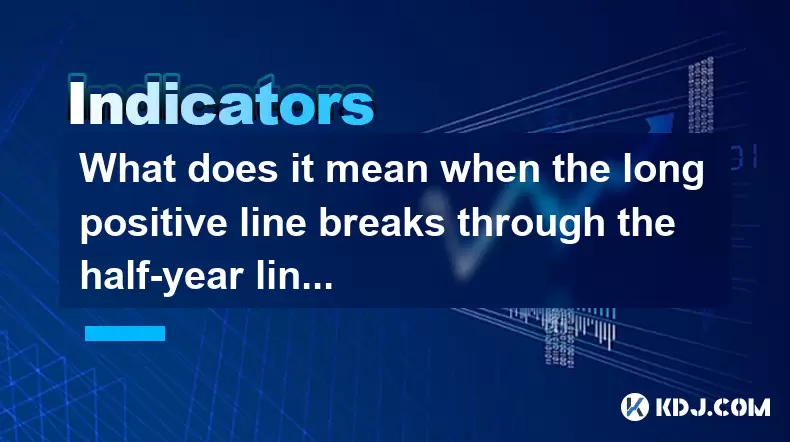
What does it mean when the long positive line breaks through the half-year line and then steps back?
Jul 25,2025 at 06:49pm
Understanding the Long Positive Line in Candlestick ChartsIn the world of cryptocurrency trading, candlestick patterns play a vital role in technical ...
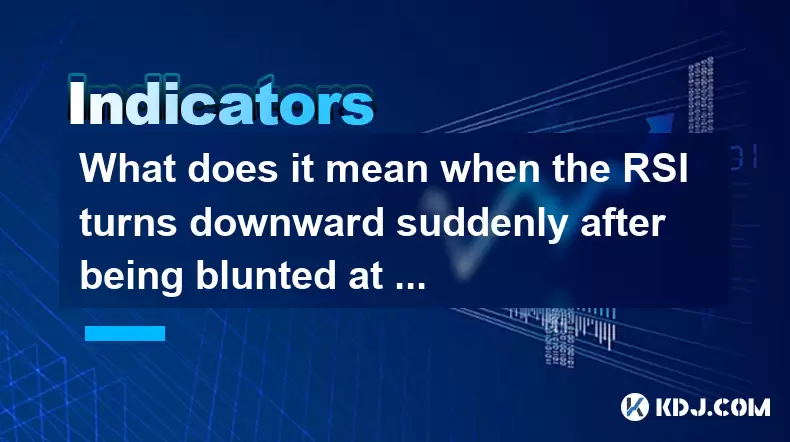
What does it mean when the RSI turns downward suddenly after being blunted at a high level?
Jul 25,2025 at 04:00pm
Understanding the RSI and Its Role in Technical AnalysisThe Relative Strength Index (RSI) is a momentum oscillator that measures the speed and change ...
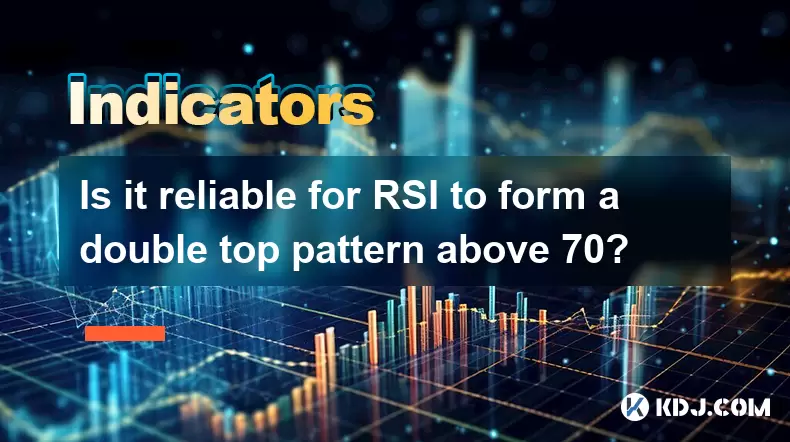
Is it reliable for RSI to form a double top pattern above 70?
Jul 25,2025 at 04:49pm
Understanding the RSI Indicator and Its Role in Technical AnalysisThe Relative Strength Index (RSI) is a momentum oscillator that measures the speed a...
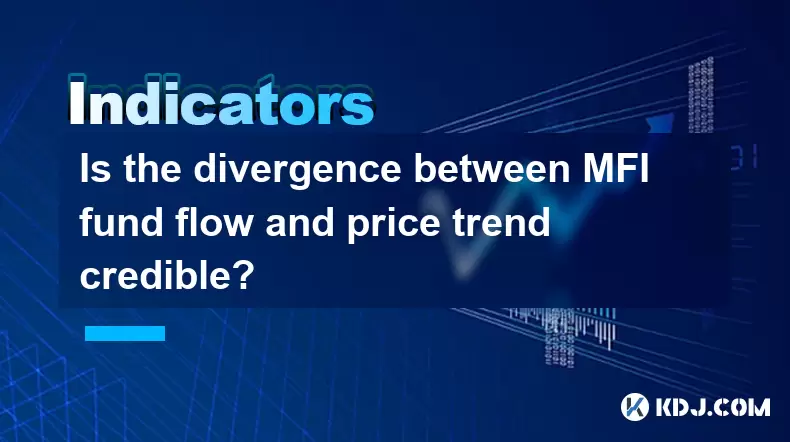
Is the divergence between MFI fund flow and price trend credible?
Jul 25,2025 at 12:01pm
Understanding MFI and Fund Flow in Cryptocurrency MarketsThe Money Flow Index (MFI) is a technical oscillator that combines price and volume to assess...

How to interpret that the KDJ D line is downward for a long time but the price is sideways?
Jul 25,2025 at 07:00pm
Understanding the KDJ Indicator and Its ComponentsThe KDJ indicator is a momentum oscillator widely used in cryptocurrency trading to assess overbough...

What does it mean that the KDJ indicator forms a double bottom at a low level?
Jul 25,2025 at 05:08pm
Understanding the KDJ Indicator in Cryptocurrency TradingThe KDJ indicator is a momentum oscillator widely used in cryptocurrency trading to identify ...

What does it mean when the long positive line breaks through the half-year line and then steps back?
Jul 25,2025 at 06:49pm
Understanding the Long Positive Line in Candlestick ChartsIn the world of cryptocurrency trading, candlestick patterns play a vital role in technical ...

What does it mean when the RSI turns downward suddenly after being blunted at a high level?
Jul 25,2025 at 04:00pm
Understanding the RSI and Its Role in Technical AnalysisThe Relative Strength Index (RSI) is a momentum oscillator that measures the speed and change ...

Is it reliable for RSI to form a double top pattern above 70?
Jul 25,2025 at 04:49pm
Understanding the RSI Indicator and Its Role in Technical AnalysisThe Relative Strength Index (RSI) is a momentum oscillator that measures the speed a...

Is the divergence between MFI fund flow and price trend credible?
Jul 25,2025 at 12:01pm
Understanding MFI and Fund Flow in Cryptocurrency MarketsThe Money Flow Index (MFI) is a technical oscillator that combines price and volume to assess...
See all articles

























































































